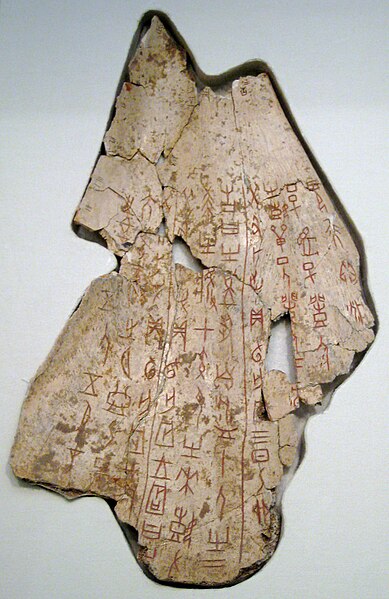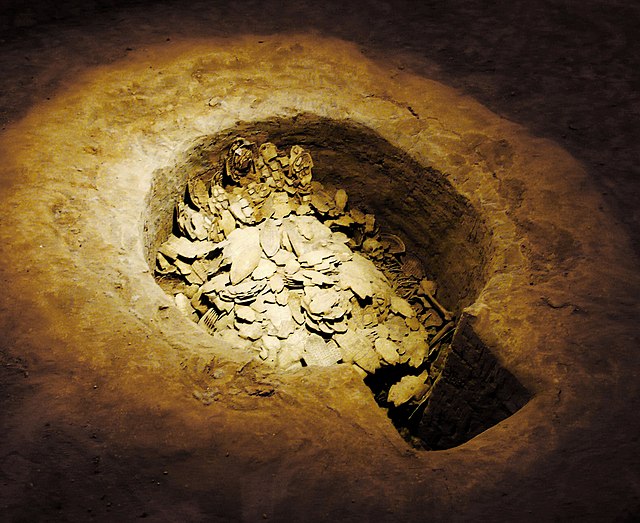Wu Ding ; personal name Zi Zhao (子昭), was a king of the Chinese Shang dynasty who ruled the central Yellow River valley c. 1250 – 1200 BCE. He is the earliest figure in Chinese history mentioned in contemporary records. The annals of the Shang dynasty compiled by later historians were once thought to be little more than legends until oracle script inscriptions on bones dating from his reign were unearthed at the ruins of his capital Yin in 1899. Oracle bone inscriptions from his reign have been radiocarbon dated to 1254–1197 BC ±10 years, closely according with regnal dates derived by modern scholars from received texts, epigraphic evidence, and astronomical calculations.
Portrait of King Wu Ding of Shang from Sancai Tuhui
Ox scapula recording divinations by Zhēng 爭 in the reign of King Wu Ding
Fu Yue, the second Chancellor of Wu Ding. He is believed to be identical to Hou Que, whose name was presented in oracle bones.
The Shang chariot at Yinxu.
The Shang dynasty, also known as the Yin dynasty, was a Chinese royal dynasty that ruled in the Yellow River valley during the second millennium BC, traditionally succeeding the Xia dynasty and followed by the Western Zhou dynasty. The classic account of the Shang comes from texts such as the Book of Documents, Bamboo Annals and Records of the Grand Historian. Modern scholarship dates the dynasty between the 16th and 11th centuries BC, with more agreement surrounding the end date than beginning date.
Shang nephrite statuette depicting a standing dignitary, dating between the 12th and 11th centuries BC, housed at the Arthur M. Sackler Museum at Harvard University
Jade deer dating to the Shang dynasty, in the collection of the Shanghai Museum
Shang jade human figure, tomb of Fu Hao (d.c.1200 BCE). Probably derived from a design of the Seima-Turbino culture.
A pit at Yinxu containing oracle bones ceremonially buried after divination








